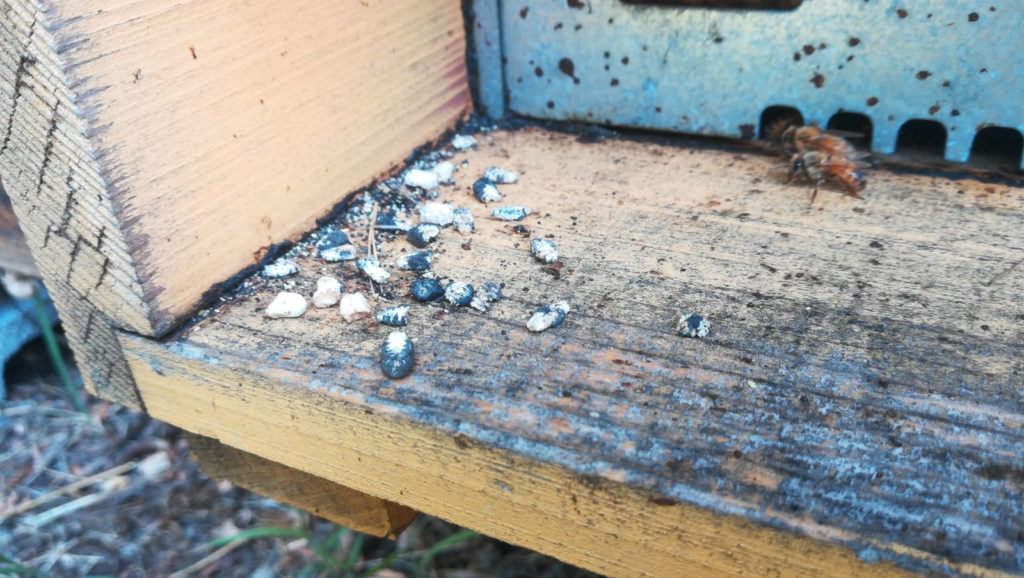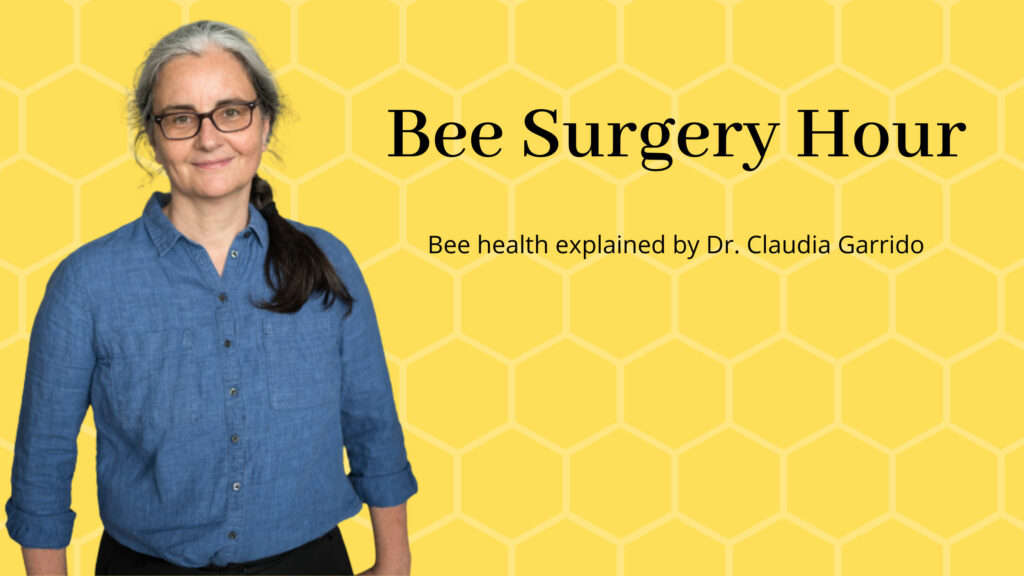For keeping healthy bees, good practices are essential. On the other hand, there isn’t a 100% guarantee that your colonies will always be healthy only because do everything right. This is the harsh reality I’m afraid. Nonetheless, there are a lot of things we can do to keep honey bee colonies healthy. In the honey bee biology lessons I’m giving at the moment, a student said: “It’s about working WITH the bees, not against them!”. Totally correct.
But what does working with the bees even mean? Here’s where the good practices come in. Every animal, every living being, has a certain range of needs, behaviours, and other traits. For managed animals, the needs of the animal and the need of the animal owner may not always be the same. Like swarming behaviour: For honey bee colonies essential as it’s the reproduction of the colony, the superorganism. But a nuisance for beekeeper, as swarmed colonies aren’t as productive anymore. Good practices now means to find a compromise. Like making nucs or artificial swarms.
The apiary – important for keeping healthy bees
It’s all about finding a balance between the needs of the beekeeper and the needs of his colony. As soon as honey bee colonies are in a beekeeper’s hands, it’s his responsibility to take care that they don’t starve or suffer from potentially deadly diseases. Which is why I speak about varroa so much… Or explained what bees do in winter. The apiary is an element of good practice that needs to be considered from the very beginning.
Honey bees like it warm and dry. Trees or bushes protect them from cold winds and also give some shade when it’s too hot. Some stand that separates them from the bare soil helps, too. They need water sources nearby and obviously enough forage (i.e. flowers) to feed themselves. A good apiary is not too crowded. Too many colonies together at a single site and/or having them all in a row increase the risk of robbery or drift. Both can lead to the transmission of diseases or the reinvasion of varroa mites into already treated colonies.
Ideally, an apiary consists in not more than 20 colonies which are positioned with some distance between them. (I’m aware this is contrary to the practices of professional beekeepers in many countries. But many of the health issues they see in their colonies are also caused by crowded apiaries). Not too crowded also means distance to other apiaries – at least 800 m again help to reduce robbery and drift, i.e. possible disease transmission.
Keeping an eye on the small issues
A high-quality apiary helps to prevent some diseases like chalkbrood. These so-called factorial diseases are more frequent in cool and humid sites. Again, chalkbrood is a frequent issue in places like this. At a good apiary, this disease usually doesn’t become a larger issue. Chalkbrood usually isn’t, but small issues can add up and debilitate the colonies. Some foresight, therefore, helps to keep healthy bee colonies and also influences the productivity of a colony.
Let me tell you a little anecdote: On a small apiary in the hills near Bologna, a very experienced beekeeper observed a colony that didn’t grow throughout spring. It didn’t die, but was much less productive than other colonies on that site. It was a good place considering the flowers and the other colonies were ok. The crucial information: It was the first colony in a row. Exposed to the wind, which could be quite cool even on warm days. This made me think of factorial diseases. This means that they happen most frequently under certain circumstances.
The first thing that comes to mind when talking about “cool place and weak colonies” is chalkbrood. The beekeeper actually had seen a few mummies, nothing to be too concerned about, he said. But continuously, even in later spring. Usually, honey bee colonies show symptoms of chalkbrood in earlier spring. As soon as the weather gets warmer and drier, they manage to overcome the infection by themselves. As in this case the infection continued to affect the colony, I proposed to break the wind somehow, to break the “chill factor”. Planting some shrubs could help, or also some sort of shield like those used on the beach to protect from the wind. This actually helped. Protected from the wind, the colony recovered and overcame the chalkbrood infection after a while.

Observation and foresight for healthy bee nutrition
The apiary is also essential when it comes to the nutrition of the colonies. Beekeepers often think of the nectar supply but forget the pollen. Keeping bees healthy also means good nutrition and pollen carries most of the nutrients they need. The mass-flowering crop that gives you a good honey harvest isn’t enough for that. A French study over five years showed impressively that foragers stay on the honey crop when it comes to nectar. But for the pollen they use all the flowering “weeds” that were around the fields. One sort of pollen isn’t enough. They need diversity.
A good pollen supply is important all year round, but especially during two periods of the year: In late summer and autumn, when they’re preparing for the winter and in spring. Before winter, they need to build up a big fat body. This is a storage organ which also plays an important role in detoxification processes. In winter bees, this organ is especially developed. They need it for getting over the periods with low resources.
When they begin to breed again in spring, good pollen sources are essential, too. The old winter bees turn around and become nurses again. The pollen stores from last summer are ok, but with a growing colony it’s also important that new stuff comes in. So, observation and foresight when choosing the place you put your colonies over winter is important: Are there enough pollen sources around to help them survive the winter and start off the next season well?
Continuously improving honey bee health
Beekeeping is a complex activity. But you don’t to learn everything at once or do everything right from the very beginning. Choosing good apiaries is a skill you will develop over time. You’ll recognize the good places and learn how to tweak the factors that aren’t ideal. There isn’t such a thing like a perfect apiary. Even on the best one there will be issues of some sorts from time to time. The thing is to know how to minimize the risks, to learn how to recognize the small issues before they become big ones.
This happens with experience, but also by continuously learning and not staying at the “I always do it like this”-level. It’s always important to know what you’re doing. And this knowledge gets broader over time. But you also can save yourself from learning it the hard way by learning and training. Nothing will save you from having some colony losses. But knowledge will help to prevent them of being higher than those “normal” up to 15%. Not to forget that you’ll be able to recognize scam easier. Which exists also in beekeeping, especially with the “save the bees”-hype.
So, if you want to start the journey of keeping healthier bees, the BeeSafe academy may be a good option. Which will open its doors end of this month. Or you can subscribe to the Bee Health Letters, where you’ll stay up to date with all upcoming courses, but also with news all around bee health. Just scroll down to “Keep current with BeeSafe” and enter the data. Or tell me in the comments which is the most pressing bee health issue you have.


